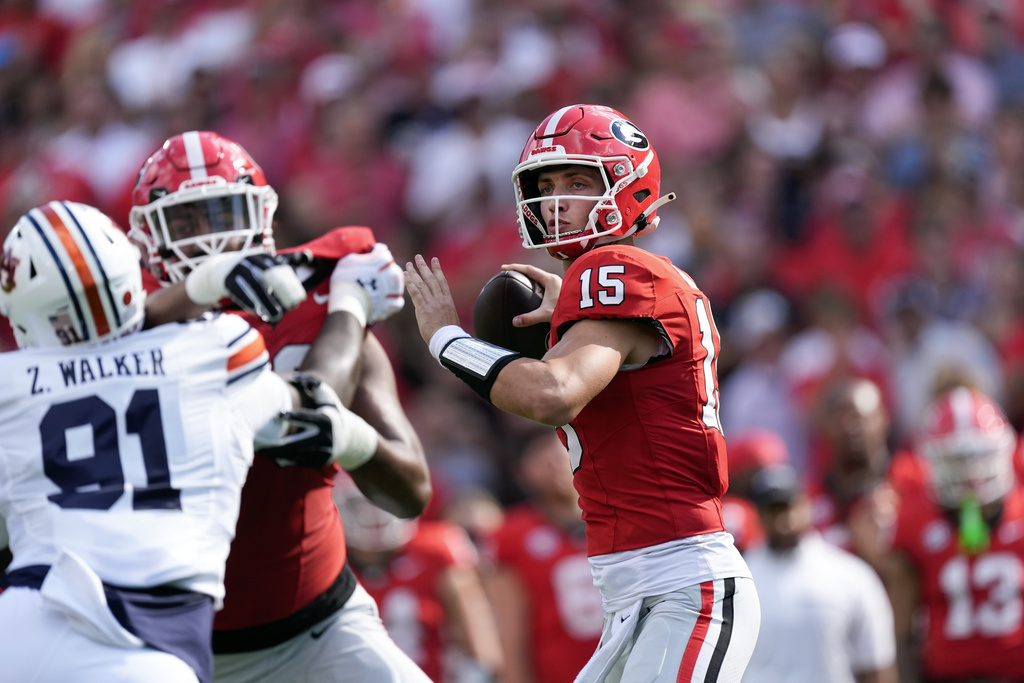Judge Approves $2.78 Billion College Athlete Settlement \ Newslooks \ Washington DC \ Mary Sidiqi \ Evening Edition \ A judge has given preliminary approval to a $2.78 billion legal settlement allowing schools to directly compensate college athletes. The deal, which includes a revenue-sharing plan, will provide payments to athletes starting in October. If finalized, it will reshape college sports, offering billions in benefits to players over the next decade.
College Athlete Payment Settlement Quick Looks
- A $2.78 billion settlement allows college athletes to receive direct payments.
- U.S. District Judge Claudia Wilken granted preliminary approval for the deal.
- Athletes can apply for compensation starting October 18, 2024.
- Final approval is scheduled for April 7, 2025, aligning with the March Madness finale.
- The settlement will create a $21.5 million annual revenue-sharing pool for athletes.
- Former college athletes dating back to 2016 can claim compensation from NIL earnings.
- The deal also addresses name, image, and likeness (NIL) oversight.
- Critics argue that most funds will go to football and men’s basketball players.
- The deal replaces scholarship caps with roster limits of up to 105 football players.
- The NCAA supports the settlement, calling it a step toward stabilizing college sports.
- Title IX implications are still unclear, especially regarding gender equity in sports.
- Litigation over athlete unionization and employee status continues.
Deep Look
On Monday, U.S. District Judge Claudia Wilken granted preliminary approval to a groundbreaking $2.78 billion legal settlement that will significantly change the landscape of college athletics by allowing schools to compensate their athletes. The settlement marks a major shift in how college sports are structured, establishing a revenue-sharing model between institutions and athletes, who previously played mainly for scholarships and small stipends while universities and athletic departments generated millions in revenue. This landmark deal would allow student-athletes to apply for payments starting October 18, 2024, with final approval slated for April 7, 2025, the day of the college basketball national championship.
The settlement stems from a series of antitrust lawsuits against the NCAA, including one led by former Arizona State swimmer Grant House. It is expected to bring over $20 billion in new payments and benefits to college athletes over a decade. According to Steve Berman, the plaintiffs’ lead attorney, the approval moves college athletics “one step closer to revolutionary change,” providing billions of dollars in revenue sharing that had long been denied to athletes.
Under the agreement, major universities, particularly those in the power conferences, will set aside approximately $21.5 million annually for a revenue-sharing pool. This figure represents about 22% of the average revenue generated by these schools from media rights, ticket sales, and other sources. Over time, this amount will be recalculated to reflect changes in revenue streams and remain in effect throughout the 10-year duration of the agreement.
Notably, this settlement will allow athletes to continue securing separate name, image, and likeness (NIL) deals from outside companies. However, the deal will also introduce a framework for regulating NIL agreements to ensure compliance with new guidelines overseen by a neutral arbitrator. The original settlement agreement was adjusted earlier this month after Judge Wilken expressed concerns about the definition of “boosters,” which has now been replaced with more precise language clarifying whose NIL deals will be subject to arbitration.
In addition to the revenue-sharing model, the settlement removes scholarship caps, replacing them with “roster limits” for football, the sport that brings in the most revenue at many major universities. Schools will be allowed to carry up to 105 football players on their roster, increasing the size of teams to better manage the demands of the game. While this new structure offers more opportunities for athletes, it raises questions about how it will affect Title IX, the federal law mandating gender equity in college sports. Currently, it is estimated that around 90% of the money from this settlement will go to male athletes, particularly those in football and men’s basketball, which generate the bulk of revenue in college athletics. Critics argue that this could create disparities between men’s and women’s sports and potentially lead to violations of Title IX.
The NCAA has voiced support for the deal, with President Charlie Baker calling it a “landmark settlement” that will help bring “stability and sustainability” to college athletics while increasing benefits for student-athletes. The NCAA is currently navigating a period of significant change in the college sports landscape, including an expanded college football playoff and the formation of mega-conferences, such as the Southeastern Conference and Big Ten, which now comprise 34 teams combined. The $21 million the schools will pay to athletes annually is a small fraction of what professional leagues, like the NFL, distribute through their salary caps, but it represents a significant step forward for college sports and the rights of athletes.
The settlement also retroactively covers athletes dating back to 2016, allowing them to apply for a share of $2.576 billion in compensation for NIL opportunities that were denied to them before the NCAA allowed such deals in 2021. This compensation helps address the losses many former athletes faced when they missed out on the ability to monetize their name, image, and likeness during their college careers.
While this settlement represents a major victory for athletes, its broader implications for the future of college sports remain uncertain. The settlement resolves three major antitrust lawsuits, but other legal battles, such as the ongoing debate over whether college athletes should be considered employees and have the right to unionize, are still unresolved. Furthermore, concerns about how the settlement might affect non-revenue sports, which often rely on the income generated by football and basketball, have been raised by athletic departments. Some schools worry that paying athletes could strain their budgets, potentially impacting smaller sports programs that play key roles in feeding athletes into Olympic-level competitions.
The settlement also highlights the NCAA’s ongoing effort to push for federal legislation to standardize NIL rules across the country. Currently, NIL is governed by a patchwork of state laws, individual school policies, and legal settlements. The NCAA has advocated for federal action to unify regulations and create a streamlined system that applies nationwide.
Plaintiff attorney Jeffrey Kessler called the settlement a significant step toward reforming an unjust system. “For far too long, these athletes have been deprived of their economic rights in an unjust system that will now, finally, be fundamentally reformed,” Kessler said in a statement accompanying the court filings.
Despite the progress made through this settlement, key questions remain unanswered, including how long the terms of the deal will last and what other changes might occur in the near future. The push to recognize college athletes as employees continues, and how schools, athletic departments, and athletes themselves will adapt to the evolving landscape of college sports is still unknown. What is clear is that the era of college athletes playing solely for scholarships is over, and the settlement represents a shift toward more equitable financial treatment for student-athletes, even as the debate over their full rights continues.
Judge Approves $2.78 Judge Approves $2.78 Judge Approves $2.78







